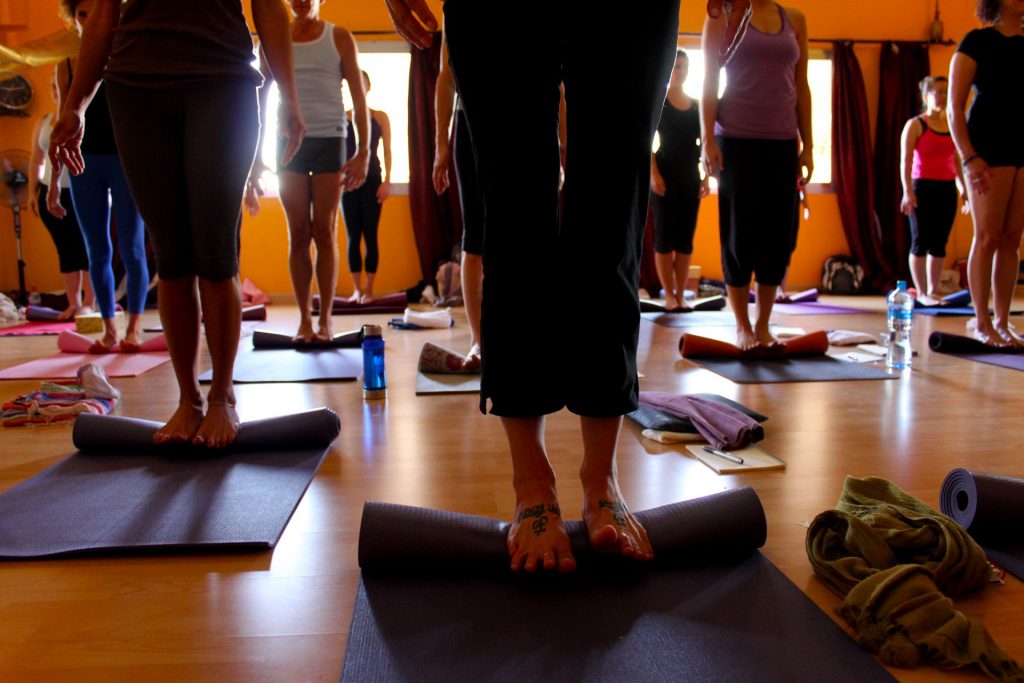Most people think Yin Yoga is simply “long, slow stretching.” But beneath the stillness lies an intricate world of connective tissue, nervous system responses, and stored life experiences. In Yin, we’re not just working with muscles—we’re entering the realm of fascia, the body’s living web that holds, supports, and remembers.
My own journey into this depth was shaped by the wisdom of my teachers, particularly those bringing trauma-informed fascia focused approaches to Yin Yoga. Their guidance helped me see that fascia is far more than a physical structure—it’s a bridge between body, mind, and emotions.
Fascia – The Body’s Web
Fascia is a continuous, three-dimensional network of connective tissue that wraps around and interpenetrates every muscle, bone, organ, nerve, and blood vessel. As Tom Myers, author of Anatomy Trains, describes it, fascia is our “organ of form”—it shapes us, transmits force, and communicates information throughout the body.
What makes fascia so fascinating in Yin Yoga:
- It’s dynamic and adaptable – It responds to how we move, the loads we place on it, and even to emotional stress.
- It stores tension and trauma – Research shows fascia has sensory nerve endings and can “remember” strain patterns, both physical and emotional.
- It loves slow, sustained pressure – Long-held Yin poses hydrate and remodel fascia, supporting mobility and relieving tension.

Myofascial Release in Yin Yoga
While many associate myofascial release with foam rollers or sports massage, in the yin approach I both studied and teach, we integrate it directly into the yoga setting—often as part of, or alongside, traditional Yin poses.
In this system, small therapy balls are placed along energy lines (meridians) or on specific fascial trigger points, allowing targeted pressure to soften tight connective tissue and restore energetic flow. Sometimes this happens within a familiar pose—like using a ball under the glute in Swan—and sometimes it’s explored in more unusual, free-form shapes designed to reach neglected areas.
This combination offers:
- Targeted release – Pinpointing areas where fascia is holding tension or adhesions.
- Energetic balance – Stimulating acupressure points along meridians, supporting organ and emotional health.
- Deeper embodiment – The focused sensation from the ball draws awareness into the body, encouraging mindful presence.
By blending sustained Yin holds with these ball-based techniques, the practice becomes both broad and precise—addressing whole-body fascial hydration while also working deeply into areas that need extra care.
Polyvagal Theory – The Missing Link
In recent years, Polyvagal Theory, developed by Dr. Stephen Porges, has given us a deeper understanding of why some students may react strongly—or shut down—during Yin practice.
Key points:
- Three states – Ventral vagal (safe/social), sympathetic (fight/flight), dorsal vagal (freeze/shutdown).
- Fascia and the nervous system are intertwined – The vagus nerve and fascial network are in constant communication.
- Trauma-sensitivity matters – A Yin shape may feel calming for one student but triggering for another, depending on their nervous system state.
With the addition of ball work in Yin, there is often a more focused and intense sensation compared to passive stretching alone. This can be deeply therapeutic—but it also has the potential to activate a stronger nervous system response. That’s why holding a trauma-sensitive space, offering choice, and allowing students to self-regulate is essential.
Trauma-Sensitive Yin – How It Looks in Practice
Drawing from trauma-informed yoga principles:
- Offer options – Props, different shapes, and clear invitations rather than commands.
- Normalize rest – Stepping out of a pose is always valid.
- Language matters – Use invitational, non-directive cues.
- Orient to the space – Encourage awareness of the environment to support safety.

Why This Matters
Combining fascia science, myofascial release principles, polyvagal theory, and of course the philosophy of Yin (namely The Tao) allows Yin Yoga to be more than flexibility training—it becomes a practice of self-regulation, emotional resilience, and embodied healing.
As Tom Myers says, “Change your fascia, change your life.”
I’d add: Change your relationship to your body, and you change your whole way of being.
Next time you settle into a Yin pose, remember: you’re not just stretching—you’re speaking to your fascia, listening to your nervous system, and creating space for old patterns to shift. In that stillness, the body whispers its stories, and with care, those stories can transform.
By Fern White-Andrews


